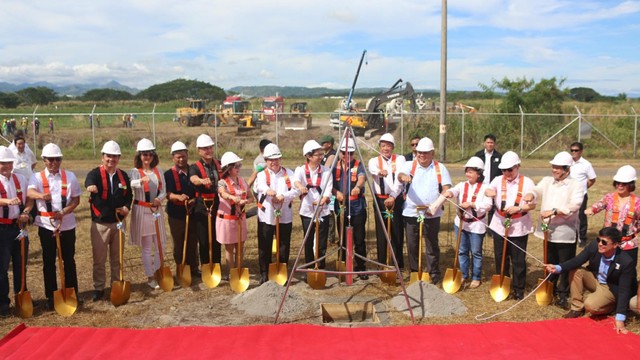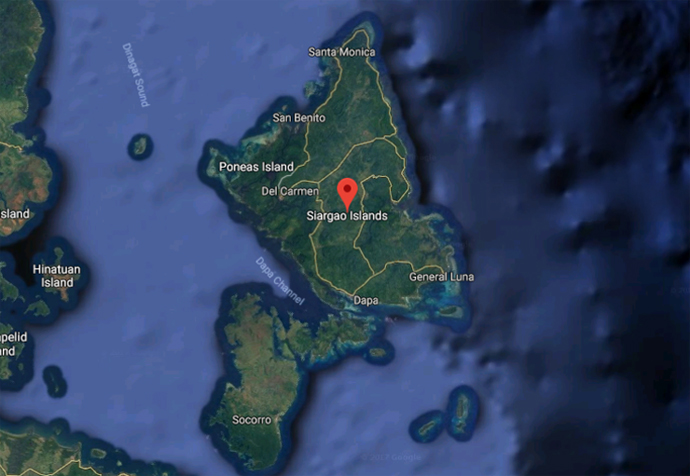A home in one: the allure of Asian golf communities
Posted 7 years ago
Anvaya Cove Sea Breeze Verandas – More than most sports, golf is considered a lifestyle choice and many aficionados, given the chance, would tee off on a daily basis. When Southeast Asia-based expatriate Paul Temple decided last year to go into semi-retirement, he chose to do just that.
“I’m an avid golfer so I wanted to find a property in a place where I could play all day and also spend more time relaxing and writing,” explains the 58-year-old Canadian. After viewing properties in China, Indonesia, Thailand and Malaysia, Temple eventually opted to purchase a PHP15 million (USD343,000) condominium unit at Anvaya Cove, a mixed-use golf and leisure community located near the Philippines’ Subic Bay.
Developed by Ayala Land Premier, the luxury residential wing of the country’s largest property developer, the 470-hectare project comprises a Golfplan-designed 18-hole golf course, as well as residential components divided into nine “neighbourhoods”, with some plots overlooking the course.
According to Jose Juan Jugo, head of Ayala Land Premier, Anvaya Cove, which launched a decade ago, has started to attract foreign buyers since the course opened last year. “The golf club has really put the icing on the cake,” he says. “We anticipate further interest in this sort of investment from what we see as a global market.” Jugo adds that investment opportunities are available to foreigners and the club also runs a condominium leasing programme that allows owners to make, on average, PHP3,500 (USD80) per night.
The growing popularity of residential golf course communities is not new to the region, although talk of investment schemes and timeshares does bring back memories of the niche market’s murky past in Southeast Asia. Certain projects, especially in Thailand, which has long been the region’s premier golf destination, became renowned for their shady investment schemes, ownership issues and the occasional bankruptcy.
A famous case is the rise and demise—and possible rise again—of Phuket’s Blue Canyon Country Club. Once one of Asia’s most celebrated courses—it twice hosted tournament and gained praise from golf legends such as Tiger Woods and Greg Norman—the club has spent the past decade stumbling from one calamity to the next. The owner, Murex, went bust in 2004, lawsuits were filed and court cases have rumbled on for the past nine years.
After a recent acquisition by local firm Ocean Group, however, things may be looking up.
“Compared to mature markets, like the US, where multi-million-dollar golf properties are the norm and speciality markets are established, buyers haven’t embraced golf enough to live in these often secluded estates,” says asset management and hospitality consultant Bill Barnett.
“In Southeast Asia, the golf property market has been something of a basket case.” He adds, however, that many of the less-desirable courses fell to the wayside after the ’97 Asian financial crisis and the new breed of golf communities, developed by property heavyweights, are banking on brand loyalty and additional luxuries.
Indeed, in an effort to drive investment from the wider market, many in the latest wave of courses and clubhouses, like Anvaya Cove, are being integrated into larger master-planned communities and offer residents lifestyle amenities including beach clubs, adventure facilities and retail outlets.
Some of the region’s leading high-end developers are also teaming up with global brands, namely Indochina Land’s collaboration with Colin Montgomerie on Danang-based property Montgomerie Links Vietnam and the DAMAC partnership with Trump Golf. The Middle East’s largest developer’s latest master development, AKOYA by DAMAC, set to comprise 7,000 residential units, will feature the first Trump-branded golf course in Asia.
Whilst Trump International Golf Course, Dubai is the company’s initial foray into Asia’s golf market, Donald Trump, president of The Trump Organization, is confident that the brand will expand its presence as the sport continues to take off around the region. “There is tremendous potential in Asia. It’s amazing, in fact,” he says. “I think it helps to see the world as an emerging market—there are so many locations that are terrific and for many reasons I’m optimistic when it comes to expanding because we’ve experienced tremendous success.”
But a big-name collaboration is not the only recipe for success. Some smaller, yet highly reputable courses with residential components have also benefitted front the resurgent demand for golf real estate.
The Thai coastal resort of Hua Hin and surrounding area is home to more than 20 courses, including the golf communities of Black Mountain and Palm Hills, both of which recently witnessed a surge in investment.
A British investor and founder of a Hua Hin-based boutique developer, who doesn’t wish to be named, purchased his first property at Palm Hills in 2002. He has since bought an additional 12 plots within the community on which he’s built three- and four-bedroom villas.
During the 12-year period, the Hua Hin resident of 30 years claims land prices have significantly increased. “Hua Hin, which has grown into one of the country’s leading golfing destinations, is an extremely active market and golf properties are selling each and every week,” he says.
“When I started buying plots and developing properties, I was paying about THB3 million (USD924,000) for 1.5 rai (2,400 sqm). Nowadays the same plots are going for more than THB7 million (USD215,650).”
The investor adds that overseas buyers, many of whom use the properties as holiday homes, have had a positive impact on the local market. Furthermore, the International Association of Golf Tour Operators notes that golf tourists spend an estimated 120 percent more than average tourists and regularly purchase second homes in favoured destinations.
Luxury residential real estate agent Sotheby’s, which for some time has focused on global golf property, last year launched a dedicated branch to handle the specialised market. The agent oversees some of the region’s top golf course communities, including Montgomerie Links Vietnam and Blue Canyon Country Club.
Sotheby’s Vietnam-based associate director Christopher Piro agrees that whilst tourism has played a major role in the market’s renaissance, the most significant factor is the increasing affluence of regional investors from the countries such as Hong Kong, Singapore and Australia.
“Rising salaries amongst Asia’s middle-classes has had a pretty significant impact on the market and they are looking especially for property priced around the USD500,000 mark,” he explains.
“This price level attracts, for example, directors from banks and other financial institutions, who are maybe making their second or third overseas investment and see golf property as an attractive alternative to more expensive real estate, with the added bonus of lifestyle amenities.”
Golf and leisure communities, both boutique and branded, will undoubtedly continue to emerge around the region to cater not only to the changing tastes of the region’ rapidly increasing middle class and the influx of international golf tourists, but to accommodate the future hub of the sport. As HSBC’s recent report Golf’s 2020 Vision notes: “It seems only a matter of time before the centre of gravity in the game moves to Asia. Just as the popularity of cricket in India means that the sub-continent has become the economic and political centre of the sport, so we expect to see the centre of the professional golf game move towards Asia.”
Source: Property Guru



































Loading Comment